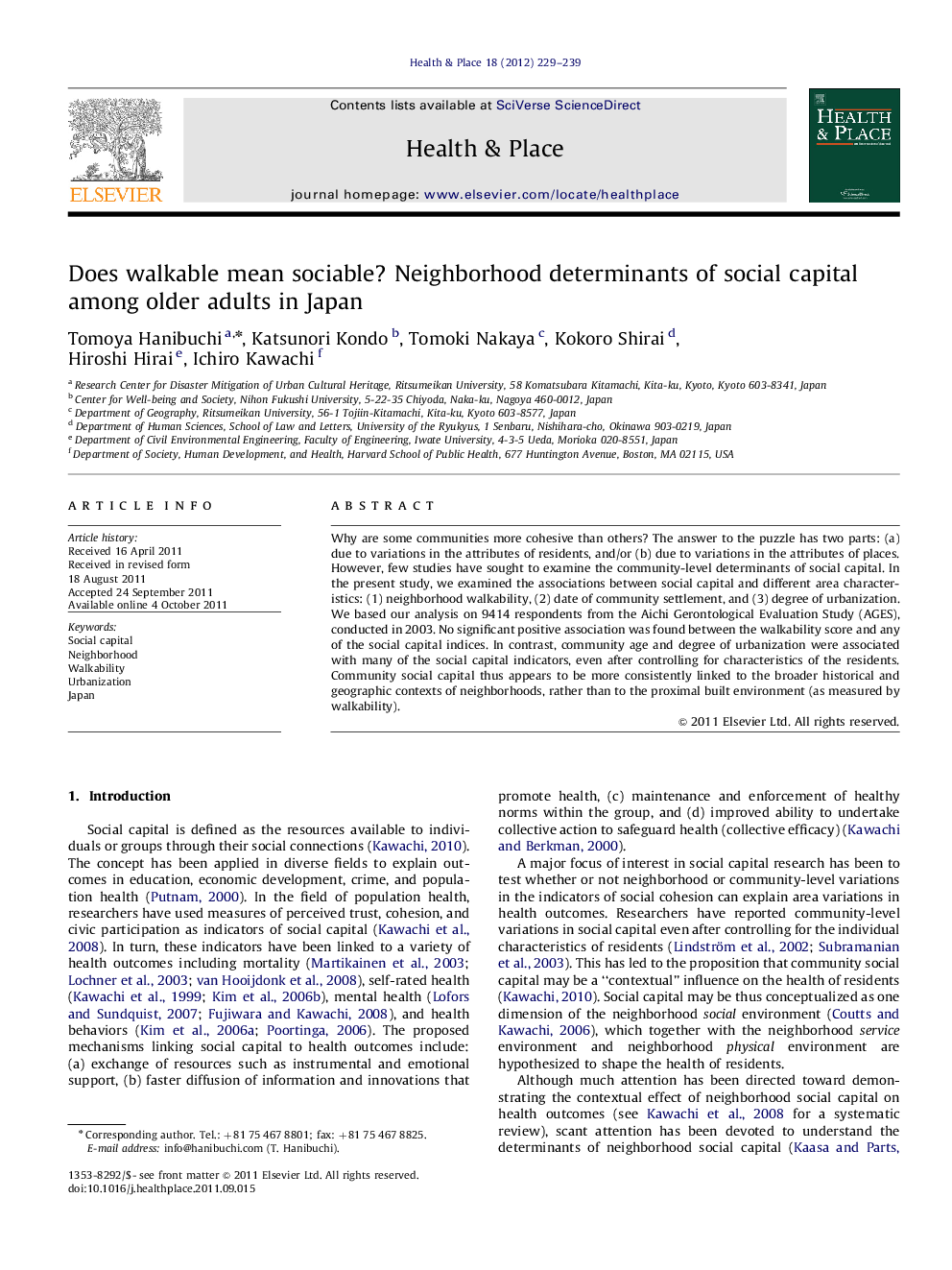| Article ID | Journal | Published Year | Pages | File Type |
|---|---|---|---|---|
| 10502667 | Health & Place | 2012 | 11 Pages |
Abstract
Why are some communities more cohesive than others? The answer to the puzzle has two parts: (a) due to variations in the attributes of residents, and/or (b) due to variations in the attributes of places. However, few studies have sought to examine the community-level determinants of social capital. In the present study, we examined the associations between social capital and different area characteristics: (1) neighborhood walkability, (2) date of community settlement, and (3) degree of urbanization. We based our analysis on 9414 respondents from the Aichi Gerontological Evaluation Study (AGES), conducted in 2003. No significant positive association was found between the walkability score and any of the social capital indices. In contrast, community age and degree of urbanization were associated with many of the social capital indicators, even after controlling for characteristics of the residents. Community social capital thus appears to be more consistently linked to the broader historical and geographic contexts of neighborhoods, rather than to the proximal built environment (as measured by walkability).
Related Topics
Health Sciences
Medicine and Dentistry
Public Health and Health Policy
Authors
Tomoya Hanibuchi, Katsunori Kondo, Tomoki Nakaya, Kokoro Shirai, Hiroshi Hirai, Ichiro Kawachi,
